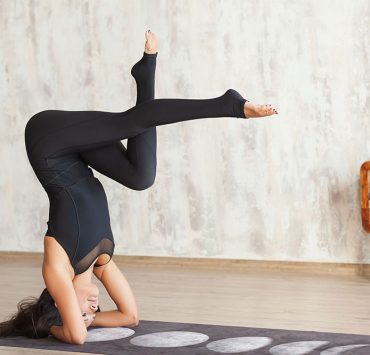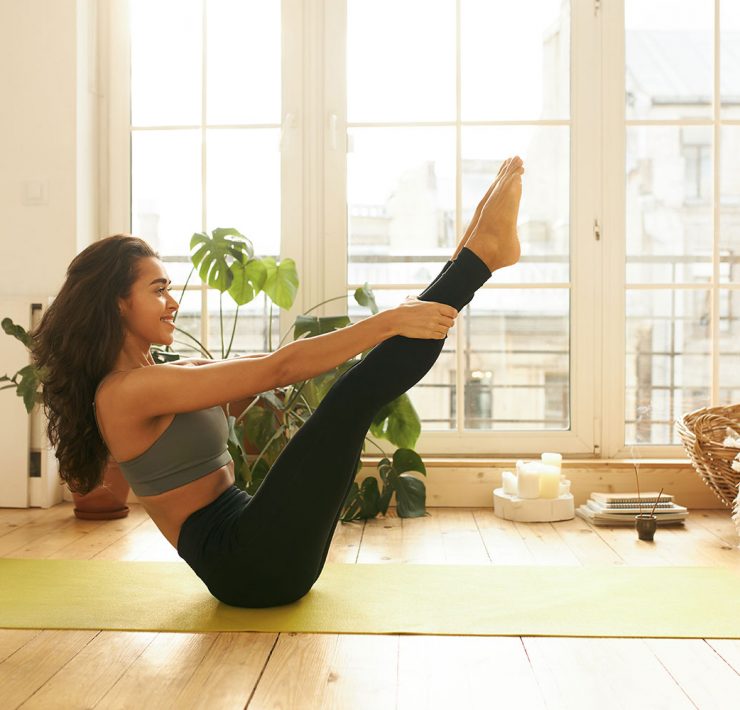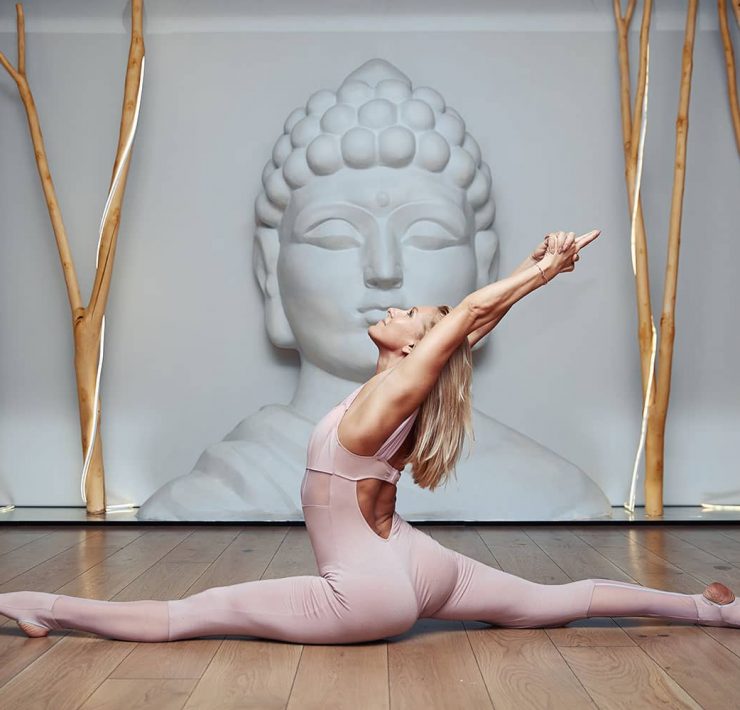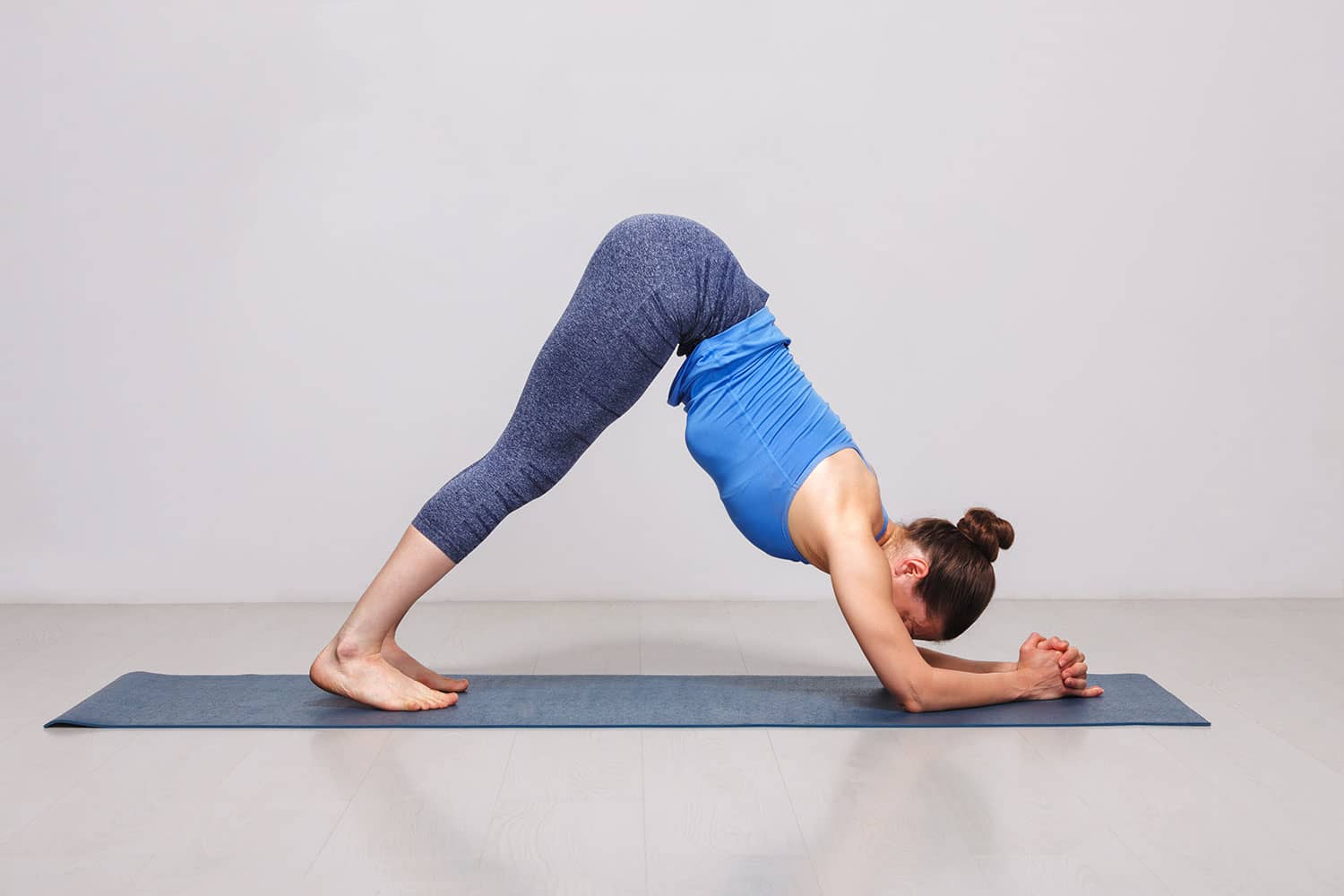
As a former social media manager and marketing guru, Amy…
Do you want to open and strengthen your shoulders, open your hamstrings, and prepare your body and your mind to go upside down – thus culminating in perfecting your practice of the Dolphin Pose? This ultimate guide to Dolphin Pose will help you do just that. It’ll answer your lingering questions such as what exactly is the dolphin pose, who benefits from practicing the Dolphin Pose, step-by-step instructions to simplify this pose, and tips for modifying the pose and for beginners.
What is Dolphin Pose?
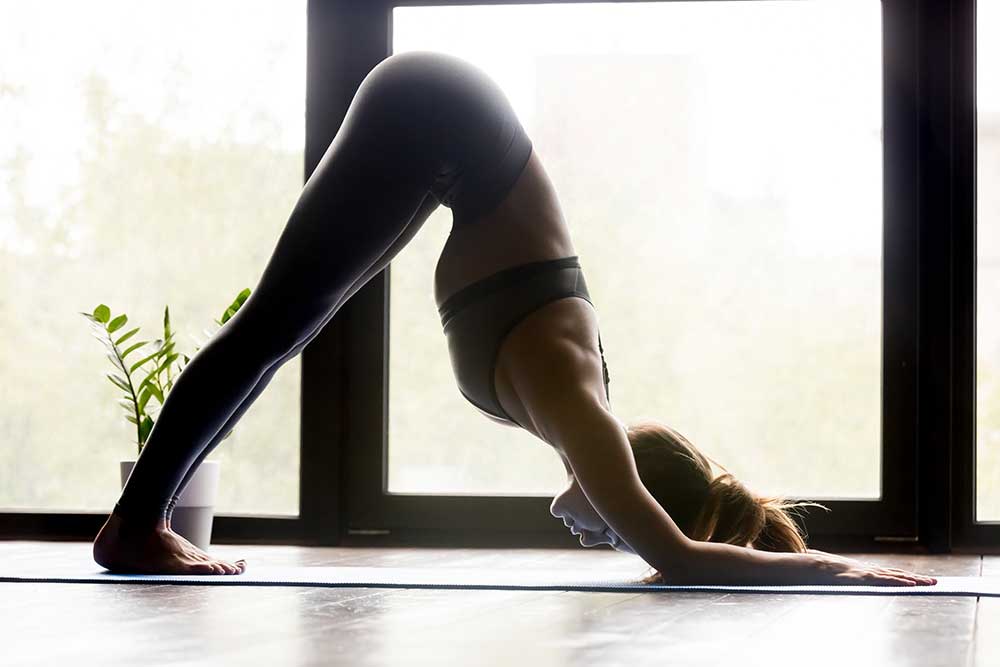
What do you think of when you think Dolphin Pose? It doesn’t sound quite as straight forward as a Mountain Pose, Tree Pose, or Child Pose, right?
But, Dolphin Pose isn’t as difficult or complicated as you may be imagining or picturing in your head. In fact, it’s actually a great variation to one of the most popular poses and one you likely find yourself doing in almost every class or practice – Downward-Facing Dog Pose. The Dolphin Pose provides all the same amazing benefits of Downward Dog while relieving pressure on the wrists due to being done on the forearms.
Many people may have sensitive wrists due to a variety of reasons such as working on a computer all day, playing instruments like the guitar, drawing, lifting weights, or other methods of working out. Dolphin Pose is extremely useful for these instances.
Dolphin Pose is mostly considered a resting pose also known as अर्ध पिन्च मयूरासन/ Ardh Pinca Mayūrāsana ((are-dah pin-cha my-your-AHS-anna) in Sanskrit. The name derives from the words “ardha” (half), “pincha” (feathers), “mayura” (peacock) and “asana” (pose).
Another fun fact is that Forearm Stand is called Pincha Mayurasaan and therefore, Dolphin Pose could technically be called “Half of a Forearm Stand” as it resembles the Forearm Stand before your feet and legs lift off of the ground. Which makes perfect sense since this is a pose that will very much benefit your development of Forearm Stand. Some yogis may even affectionately call this pose Puppy Pose so don’t be surprised if you hear that term used.
Dolphin Pose is a great beginning yoga pose for a number of different reasons. The shoulder girdle is often weak for many beginners to yoga and the Dolphin Pose naturally strengthens this muscle group. When you’re new to yoga or an experienced yoga practitioner, this yoga pose will provide important and much-needed inspiration for alignment.
When Do You Use Dolphin Pose?
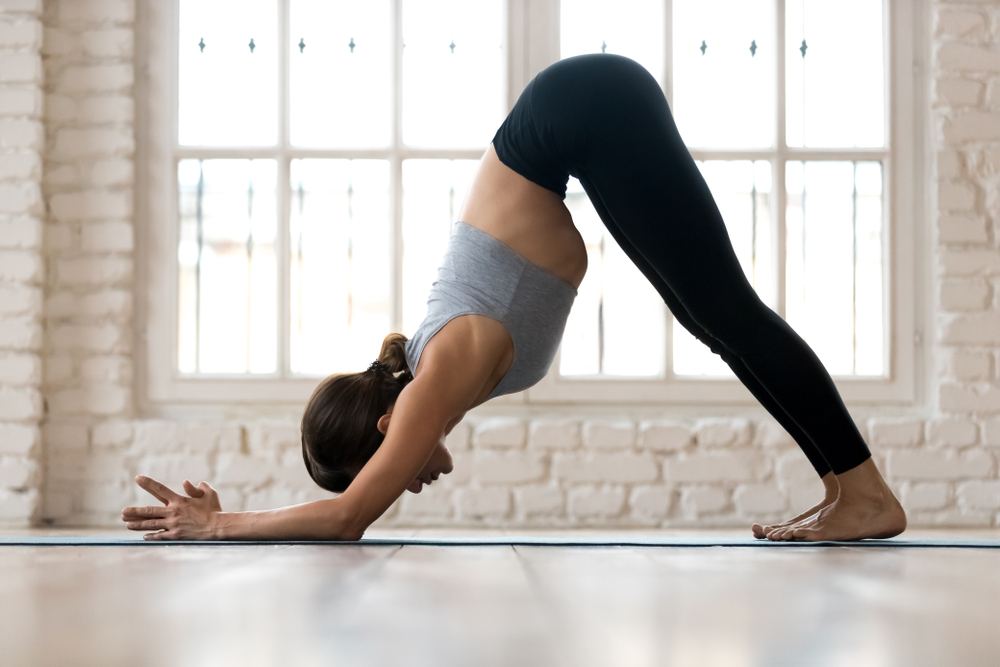
The Dolphin Pose is a fantastic way to warm, strengthen, and stretch your entire body. This alone makes it a powerful pose for any practice. It can also be a great modification for those with wrist problems. The Dolphin Pose adds variety and fun to your practice while challenging your muscles and your mind.
Dolphin Pose can obviously be used at home during your own practice and you may regularly find yourselves doing it during restorative yoga, hot yoga, or general yoga classes.
Benefits of The Dolphin Pose

Generally, the Dolphin Pose has many amazing benefits both for the physical and mental aspects of your body. This pose does a number of different things for you including improving digestion, relieving headaches, insomnia, back pain, and fatigue, and helping to prevent osteoporosis. Additionally, Dolphin Pose stretches out the shoulders, hamstrings, calves, and arches, strengthens the arms and legs, and is very therapeutic for high blood pressure, asthma, flat feet, and sciatica.
Since this pose places your heart above your head, it offers the many wonderful benefits of inversions. Inversions are very beneficial as they include a reversal of blood flow providing fresh blood and oxygen to the brain and other vital body organs. This increased blood flow to the brain aids in increased focus and concentration.
For those who menstruate, this pose also relieves menstrual discomfort (do with head supported for this benefit), and helps to relieve the symptoms of menopause.
Mentally, the Dolphin Pose also calms the brain and helps to relieve stress and mild depression.
Strengthens the Shoulder Girdle
What is the shoulder girdle? It connects the shoulder blades, all the bones making up your shoulder joint, and all of the bones in your arms and hands that connect to the rest of your skeleton through your collar bone and sternum. It’s a pretty important bone structure and the stronger the muscles in your upper back and chest, the more stable your upper body will become. This strengthening makes you physically more durable in life and in yoga and less likely to get injured.
Improves the Forearm Stand
The Dolphin Pose definitely assists in learning or working to improve one’s strength in Forearm Stand. This pose helps you develop the stability you will need in your chest and shoulders and helps you to avoid sagging into your shoulders in your forearm stand. The Dolphin will increase your stability and your balance in your posture for longer periods of time.
Improves Headstand
Similarly to Forearm Stand, Dolphin Pose is a huge help with learning or improving Headstand. By practicing the Dolphin Pose, you will increase your strength and awareness of the muscles in your shoulders and your back. These are the same muscles that are actively engaged in a Headstand. The Dolphin also helps to strengthen the awareness of your core muscles which aids in balance during Headstand.
Strengthen Abdominal Muscles
Want abs without actually having to do crunches or sit-ups? We all do, of course! While they won’t just show up overnight, there are ways to strengthen your core without doing those repetitive exercises. The Dolphin Pose does this as well. As you move forward and back in this posture, you’ll be engaging all of the muscles in your core. This will naturally increase your strength, posture, and may even help the visual muscles known affectionately as a six-pack.
Develop Confidence
Think of the Dolphin Pose as a trust fall with yourself. This pose is a half inversion. Therefore with the strength and confidence you’ll need to take your face forward towards your hands will build confidence within yourself. This pose will help you learn to trust your center of balance, something that will come in hand for future poses.
Common and Suggested Preparatory and Follow-Up Poses

You can use one or more of the following poses and or sequences leading up to Dolphin Pose: Plank Pos, Uttanasana, Table, Low Plank, Down Dog, Sphinx, and Gomukhasana.
You can use one or more of the following poses or sequences following Dolphin Pose: Salabhasana, Peacock, Child, and Down Dog.
Dolphin Pose: Step-by-Step Instructions
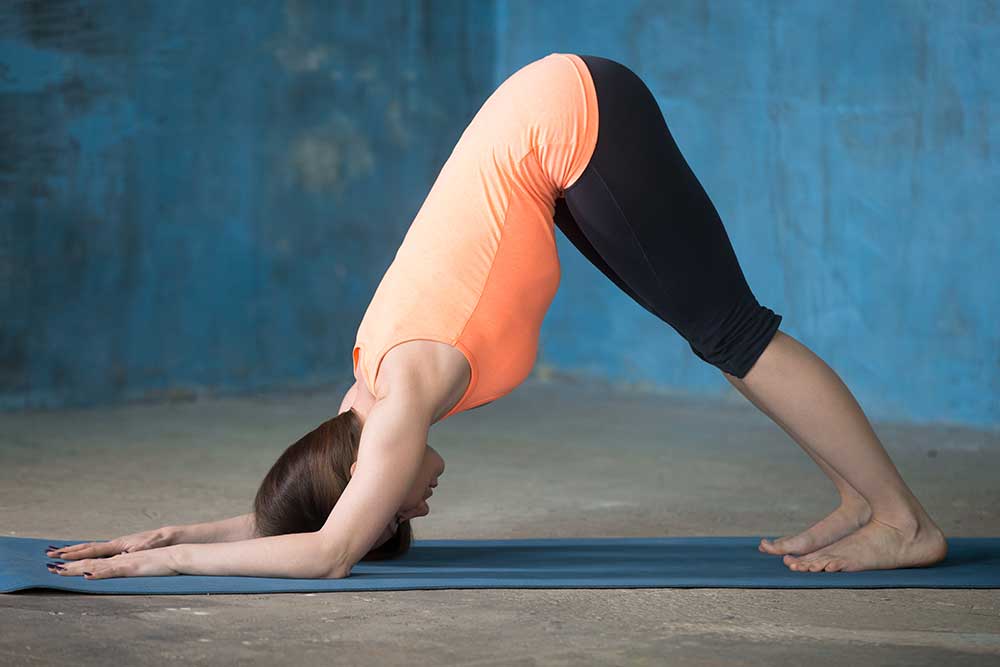
Step 1
Start by getting onto the floor on your hands and knees with your knees placed directly below your hips and your forearms placed on the floor with your shoulders directly about your wrists. Your wrists should be parallel to the top edge of your mat and your middle fingers should point directly forward. Then proceed by pressing your palms together and your forearms into the floor, distributing your weight evenly across both forearms.
Step 2
As you exhale, tuck or curl your toes under and lift your knees away from the floor. At the beginning, you’ll keep your knees slightly bent and your heels lifted away from the floor. Lengthen your tailbone away from the back of your pelvis and press it lightly towards the pubis. At the same time, lift the sitting bones upwards toward the ceiling and draw the inner legs up into the groins from your inner ankles.
Step 3
Continue intentionally pressing the forearms into the floor. Make sure to keep your shoulder blades firm against your back as you widen them away from the spine and draw them toward the tailbone. Holding your head between your upper arms with your ears aligned with your upper arms, don’t let your head hang heavily or press against the floor.
Step 4
Bring your torso and legs into the shape of an “A.” Do not walk your feet closer to your hands. You may straighten your knees; however, if your upper back starts to round, it is best to keep your knees bent. Continue to keep your tailbone lengthened away from the pelvis and lift the top of your sternum away from the floor.
Step 5
Keep the position for a time period of 30 seconds to one minute or for 5-25 breaths. Then release your knees to the floor as you exhale, returning to Child’s Pose (Balasana) to rest.
Modifications & Variations
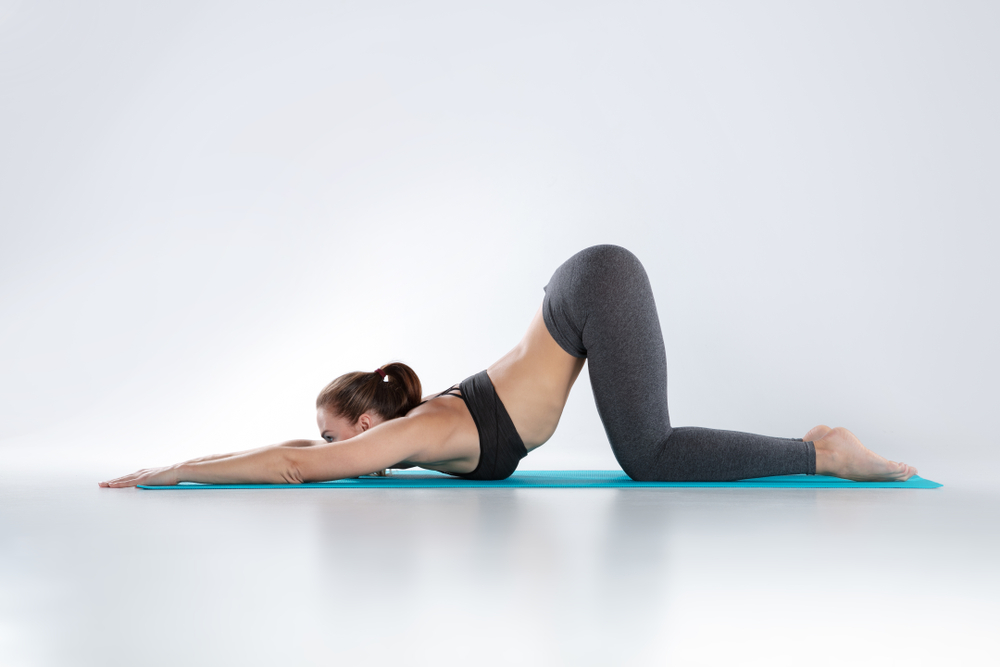
First things first, do not practice Dolphin Pose if you have current or a recent shoulder, back, arm, or neck injury. Also, avoid this pose if you have high blood pressure or an eye or ear infection.
As mentioned before, you can use Dolphin Pose as a replacement for Downward-Facing Dog if you sugar from carpal tunnel syndrome or other wrist injuries. However, it is powerful in its own right. Whether you want to modify the pose for difficulty reasons or you just want to do a variation of Dolphin Pose, there are plenty of ways to change things up.
To modify the pose, try these changes to find a variation that works for you and your practice:
- If you’d like to open the shoulders even more, you can press your palms together with your forearms on the floor. Continue pressing your palms or clasp all ten fingers together.
- To find the correct alignment for your spine, bend your knees while in the pose. Come onto the balls of your feet and bring your shins parallel to the mat. Continue to lift your sit bones higher and keep them back. Press your hips toward the wall behind you and then slowly straighten your legs.
- If you find that your upper back rounds when you straighten your legs, you can bend them again until you practice this pose enough to gain more flexibility in your spine to keep the position longer and straight throughout the pose.
- If you want to challenge yourself more, you can press yourself from Dolphin Pose directly into Downward-Facing Dog. Next, bend your elbows and lower your forearms back to the mat until you’re in Dolphin Pose again. Repeat this process 10-20 times.
Specific Modifications for Prenatal
Dolphin Pose helps to open the shoulders and release tension which many mothers-to-be likely find soothing. If you find you’re not comfortable with your head upside down, you can try this pose on a wall by pressing your forearms against the wall and walking your feet back.
Specific Modifications for Weak Knees
If you have knee problems or weak knees, place a block in between your knees to keep your stance soft.
Specific Modifications for Weak Lower Back
If you have lower back complications or a weak lower back, you can keep your knees bent and take a wider stance with less of a forward bend from the torso. This will help the lower back remain neutral during the Dolphin Pose.
Specific Modifications for Weak Hips
If you have hip pain or weak hips, you can place a block between your inner thighs and activate your abdominal muscles to lift and lengthen your legs. Over time with the practice of Dolphin Pose, your hip strength will develop.
Specific Modifications for Weak Shoulders
If you have shoulder injuries or weak shoulders, move to a wall and perform the pose upright with your elbows below your shoulders.
If your spine is flexible, don’t allow your rib cage to sink toward the floor. Instead, draw your lower ribs inward to maintain a flat back.
Similarly to Downward-Facing Dog, your heels do not need to touch the ground. The importance instead lies in maintaining the length of your spine and the lift of your pelvis. Make sure to avoid walking your feet closer to your hands to place your heels on the floor.
Specific Modifications for the Beginners
If you’re a beginner to yoga or the Dolphin Pose specifically, you can open your shoulders by lifting your elbows on a rolled-up stick may and pressing your inner wrists firmly to the floor.
What's Your Reaction?
As a former social media manager and marketing guru, Amy is up to date on the hottest trends. Using her prior experience, she flawlessly delivers relevant and accurate information on a wide range of topics.







